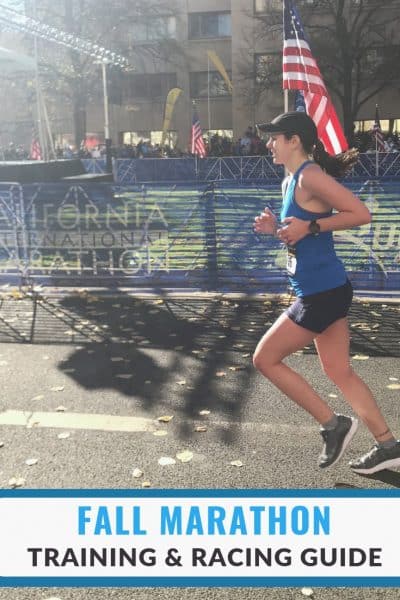
The start of September signals the advent of fall marathon season. From the Berlin Marathon to Chicago to New York City, the abundance of fall marathons attracts first-time marathons and experienced runners alike. In fact, there’s a whole plethora of must-run fall marathons to choose from. The popularity of fall marathons is no mystery. At least in past years, the temperature is in the 40s to 50s for most fall marathons, which is ideal for long distance racing. Most runners prefer training for a marathon in the summer months versus the winter months and a fall marathon offers the opportunity to finish the year strong before winter commences. Whether you are running a September marathon or early December marathon, this fall marathon guide is designed to aid you through all aspects of your training and racing.
Marathon training varies significantly based upon your experience level. Beginners will do best focusing primarily on weekly mileage and the long runs, while experienced marathoners can add in speed work and marathon-pace training.
Weekly Mileage During Marathon Training
How to Qualify for the Boston Marathon
Speed Training for Long Distance Runners
Quick & Effective Strength Workout for Marathon Training
How to Maximize Your Long Runs
5 Best Half Marathon and Marathons Workouts
How to Survive the Marathon Taper
Poor nutrition (including dehydration) can derail your long runs and your race. Most runners who hit the wall do so either because of pacing errors or nutrition errors (or both!). To minimize your chances of hitting the wall and help you stay on pace, you want to pay careful attention to your fueling and hydration on race day.
How to Avoid Three Common Race Day Fueling Errors
How I Improved My Marathon Nutrition
The marathon can throw anything your way race day – and so in order to run your best race, you need to be physically and mentally prepared for all sorts of circumstances. While fall weather is often cool and pleasant, you may encounter heat, rains, or unseasonably cold temperatures on race day. A sound pacing strategy, the right gear, and mental preparation will help you through even the most challenging miles of the marathon.
How to Pace Your Fastest Marathon
How to Overcome a Negative Mindset on Race Day
Mental Strategies for Racing Your Next PR
The entire marathon experience doesn’t conclude once you cross the finish line. Marathon recovery is essential, even if perfect fall temperatures tempt you to try to run too soon after the race. The post-marathon blues can be a big issue during fall marathon season, since the combination of completing a big event after months of training and the increasing darkness of fall can cause a case of the doldrums.
The Best Post-Run Recovery Tips
How to Recover after a Marathon
How to Cope with the Post Marathon Blues
Which fall race is your favorite?
Do you prefer fall or spring races?
2 Responses
Thanks for this guide!!
Love it. Thanks for putting it together.